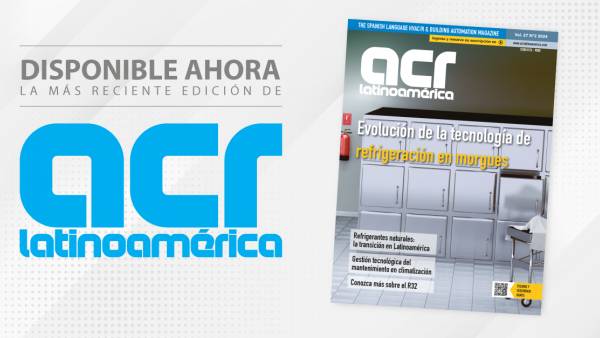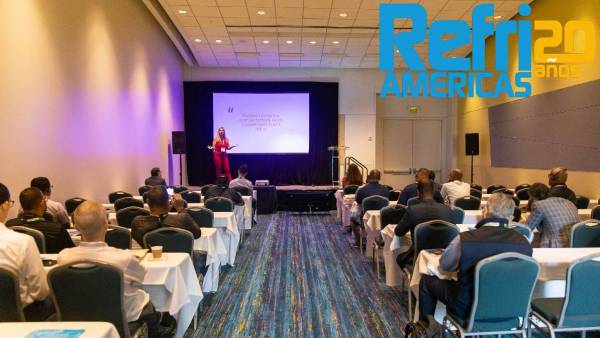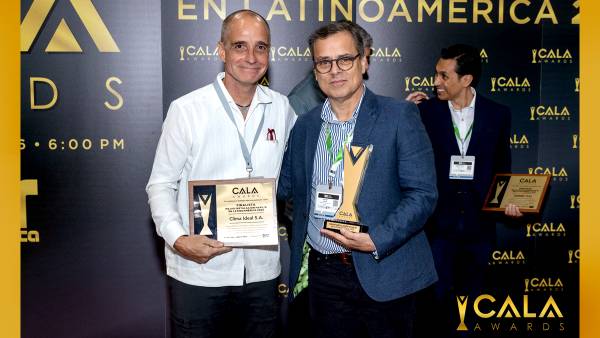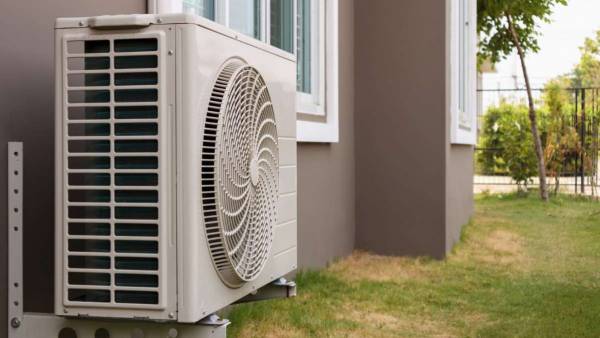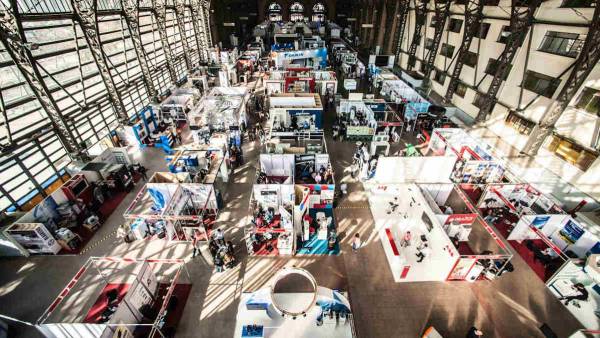
Refrigerators, pumps, fans, cooling towers, pipes, pipes, rigid electrical ducts, etc. that are rigidly screwed into a structure, transmit 100% of its vibrational energy. The introduction of appropriately selected vibration insulators will reduce this transmitted energy to the extreme that it is totally imperceptible or so reduced that it is not annoying to the occupants, or structurally destructive or in the worst case to the detriment of critical manufacturing processes. "Vibration isolation efficiency" is defined as the percentage of vibration that is not transmitted to the structure due to the introduction of vibration insulators.
It is important to note that commercial vibration control is not an exact science. The weight of the equipment provided by the manufacturers is, at most, approximate, and the location of the center of gravity is even more diffuse. Using commercially available assemblies, it is impossible to choose them with exact flexion. Vibration isolation items are not precision mechanisms, and there can be no exactly cataloged docks for loading. For these reasons, push-ups are normally specified as minimal. Push-ups beyond those minimums will lower the natural frequency and improve performance.
The transmitted vibration is that part of vibration that is perceived and suffered by the structure. With 90% efficiency, there is 10% transmission. Efficiency is basically a commercial term, probably developed from the system we all live with: 85% normal, 90% good and 95% excellent.
In our work, these numbers can be extremely misleading. If we compare 90% and 95%, we only assume an improvement of 5%. However, the comparison of 5% transmission shows that only half of the remaining force is transmitted. No number can be considered alone as the source of vibration, and what we have to eliminate is the decision factor.
In gross terms, a 125 hp (93 kW) pump will generate 5 times the vibrational energy of a 25 hp (19 kW). Therefore, the insulation provided for the 125 hp (93 kW) pump must be 5 times more efficient to reduce the transmission force to a similar level. 80% efficiency with a 20% transmission for the 25 hp (19 kW) pump is equivalent to 96% efficiency with 4% transmission for the 125 hp (93 kW) unit.

Basic considerations
A completely arithmetic, rather than conventional, approach provides a better mechanical visualization of what is really happening. The results can be confirmed in the efficiency letter.
There are six basic considerations once
that the installation is far from resonance:
- Efficiency is controlled by static bending and transmission is reduced in direct proportion to increased bending.
- If the frequency of the insulator approaches the working speed of the equipment, the resonance is amplified.
- When resonance approaches, the dynamic motion generated by the unbalancing force is amplified.
- Dynamic motion is controlled by the unbalancing force and its relationship to total mass. For all practical applications, at higher frequency ratios the frequency ratio itself does not influence movement.
- Once the frequency ratio is 3:1 or greater, the movement should only be reduced with the introduction of mass.
- Assuming that the unbalancing forces act on the center of gravity, the motion is reduced in direct proportion to the increase in mass.
Actually, when a rotating machine vibrates on insulation mounts, the base has a small rotational movement. Because soils are much more sensitive in the vertical direction, the other types are generally ignored and installations are always visualized moving vertically.
A spring constant is called k and is defined as the number of pounds (Kg.) required to flex the spring 1 in. (25 mm).
Thus, a spring with a constant k of 1,000 lb./in. (18 Kg./mm) will flex 0.5 in. (13 mm) with 500 lb. (227 Kg.) and 1.0 in. (25 mm) with 1,000 lb. (454 Kg.).

A system constant is normally defined as the number of pounds (Kg.) required to charter all supports of a system 1 inch (25 mm) simultaneously.
Using four springs with a k constant of 1,000 lb./in. (18 Kg./mm) each, one at each corner of the installation, the system constant will be 4,000 lb./in. (72 Kg./mm). Thus, 2,000 lb. (907 Kg.) of equipment will flex the system 0.5 in. (13 mm) and 4,000lb (1,814 Kg.) 1.0 in. (25 mm).
As the spring ratio is uniform, this also means that if the upward vibrational force pushes the equipment 0.10 in. (2.5 mm) up from the middle position, it would be reducing the spring load by 0.10 in. up by 0.10 out of 4,000 lb. (1.814 Kg.) or 400 lb. (181 kg).
By pushing the vibratory movement 0.10 in. (2.5 mm) the installation below its average position, there would be an increase in the load of the dock of the same 400 lb. (181 Kg.) it is what the structure sees as a change in static charge.

This occurs at 600 r/min. A change in static charge at a particular frequency is another definition of vibration.
This approach to the problem is best illustrated in Figure 1. If the machine operates at 600 rpm, the transmitted vibrating force will be +-400 lb. (181 Kg.) at 600 cycles/min.
Suppose the +- 400 lb. (181 Kg.) they are unbearable for the structure. The instinctive solution would be to use more mass. A traditional mass ratio is three times the weight of the equipment, bringing the system up to 16,000 lb./in. (286 Kg./mm) using individual buttresses for springs or groupings that are four times the originals. In basic rule 6, it would be stated that the vibratory motion was reduced in direct proportion to the increase in mass.
Therefore, the amplitude of 0.10 in. (0.64 mm). Following the scenes horizontally, it is seen that the reduced movement only acts against a provided spring buttress constant, so there is no reduction in vibration transmission but only in amplitude.
If the machine operates at 600 rpm, the transmitted vibrating force remains at +- 400 lbs. (181 Kg.) at 600 cycles/min.
The question that comes now is how to directly reduce the transmitted vibration.
Suppose we want to reduce this transmission by 75% so that the final result is +-100 lbs. (45 Kg.). Basic rule 1 states that efficiency is controlled by static bending and transmission is reduced in direct proportion to the increase in bending. Rule 4 also states that for all practical purposes, the frequency ratio does not influence movement.
Therefore, let's increase the flexion to 4 fleas (100 mm) as in Figure 3. As this greater flexion will give us a lower natural frequency, there will be no appreciable difference in amplitude. The example shows that the spring constant has dropped to 1,000 lb./in. (18 Kg./mm). As the amplitude remains in the originality +- 0.10 in. (2.54 mm), this amplitude multiplied by the new spring shell produces a force transmission of only +-100 lbs. (45 Kg.) at 600 cycles/min.
The problem can now be expressed on the basis of reducing the amplitude and transmission by reusing the total weight of 16,000 lbs. (7.258 Kg.) and providing 4" bending. (100 mm). A reduction in amplitude is now made to 0.025 in. (0.64 mm) and in the transmitted force up to +-100 lb. (45 Kg.).
The transmitted vibrating force would be +-100 lb. (45,5 Kg.) at 600 cycles/min. This really matches the efficiency chart of a 600 rpm machine insulated by 1" bending springs. (25 mm) and 4 in. (100 mm) which would show efficiencies of 90 and 97.5% respectively. The transmission reduction of 10:2.5 which is the same factor 4 demonstrated arithmetically.
The efficiency equation and the efficiency chart are based on the completely false assumption that the rigidity or frequency of the floor on a raised floor is very high compared to the stiffness or frequency of the insulator.
Actually, the floor has a bending by itself and a natural frequency that can be low enough to order the use of insulation with much greater bends than those indicated by the letter.

